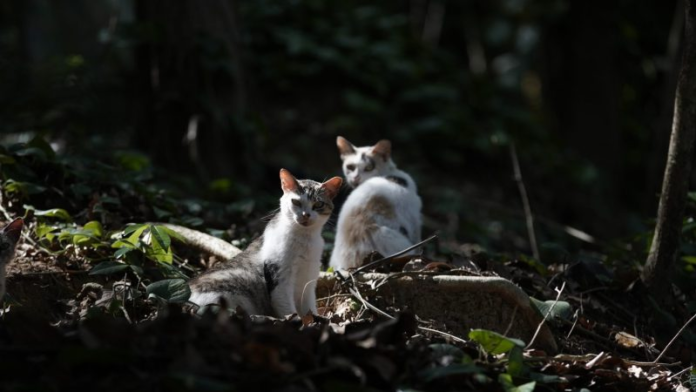(The Hill) – Cats prey on hundreds of threatened, endangered species, with scientists categorizing felines as part of the most “problematic invasive species in the world,” according to a new study.
In an assessment of the diet of 533 free-ranging cats — both owned and unowned cats with access to the outdoors — researchers found a total of 2,084 species eaten by cats, of which 347, or 16.65%, fall into the category of “conservation concern.” This includes species listed near threatened, threatened, or extinct on the IUCN Red List of Threatened Species.
In the study, published Tuesday in the journal Nature Communications, researchers from several universities, including Auburn and Cornell, said cats have a “generalist diet” and described them as “opportunistic predators and obligate carnivores.” As a result of certain physiological demands in cats, the species are known to hunt for a wide variety of animals.
In total, cats eat 981 bird species, followed by 463 species of reptiles, 431 mammal species, 119 insect species, and 57 amphibians.
About 7.1% of bird species that are a part of cats’ diet fall on the IUCN Red List, along with about 4.9% of mammal species and 2.7% of reptiles, researchers said.
Cats have the largest impact on endangered species on islands when compared to continents, the study found. Just more than a quarter of all cat-consumed species on islands, or 25.22%, were species of conservation concern, while only 8.62% of cat-consumed species on continents fell into this category.
Researchers said they discovered records of cats eating 11 species across Australia, Mexico, the United States and New Zealand that have since been recategorized as extinct in the wild or extinct, with many due to island endemics.
“Our study sheds light on the predatory habits of one of the world’s most successful and widely distributed invasive predators,” researchers wrote, adding that cats are essentially eating most things directly in their environment and may not be as discriminate with their diet choices as one might think.
“Cats are largely eating what is present and if a species is missing in the diet analysis it is likely that the prey is either absent or rare in the surrounding environment, difficult for cats to catch and hence of low profitability, or the prey is difficult to detect (e.g., invertebrates) in scat or digesta studies,” researchers continued.
The study builds upon previous findings about cats’ impact on surrounding animals, with some groups calling for better pet ownership to control wildlife losses. An analysis released in June by the Biodiversity Council, Invasive Species Council and Birdlife Australia found more than 320 million native animals are killed by cats in Australia every year, an increase from 241 million in 2020.




